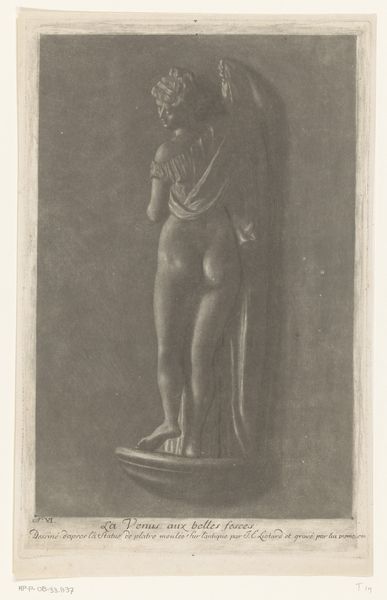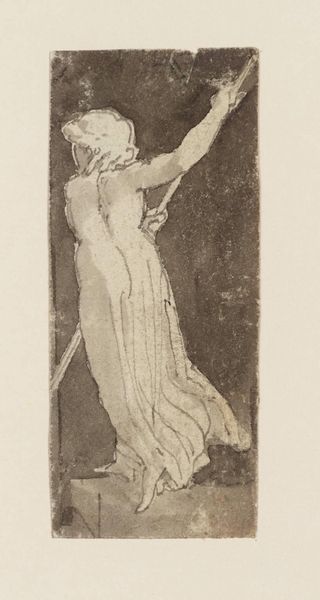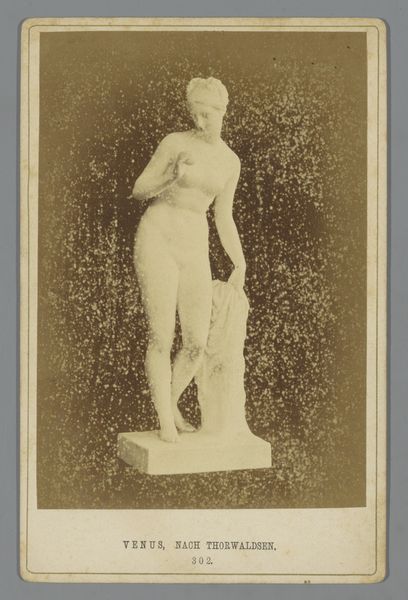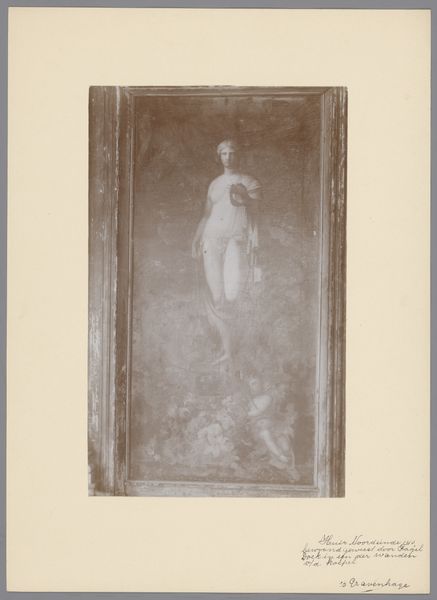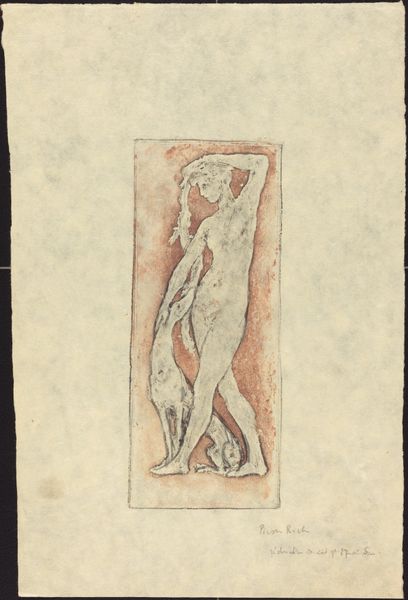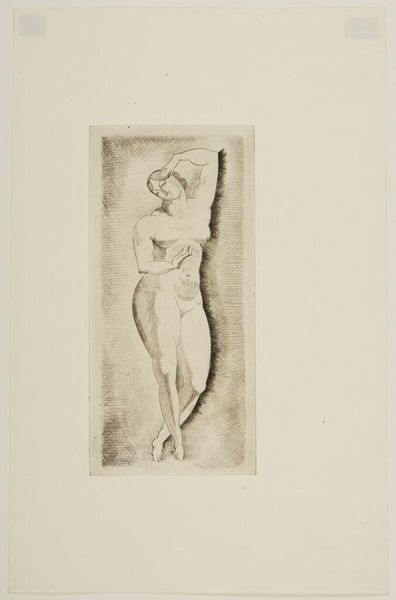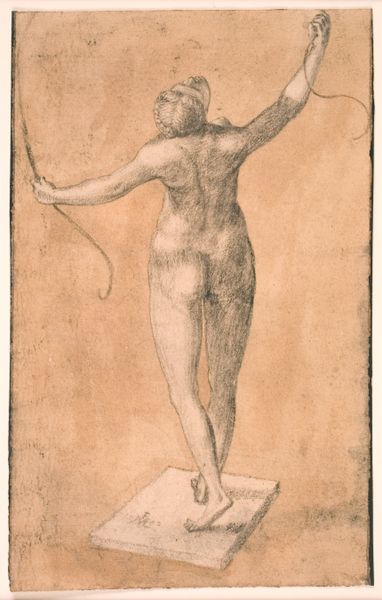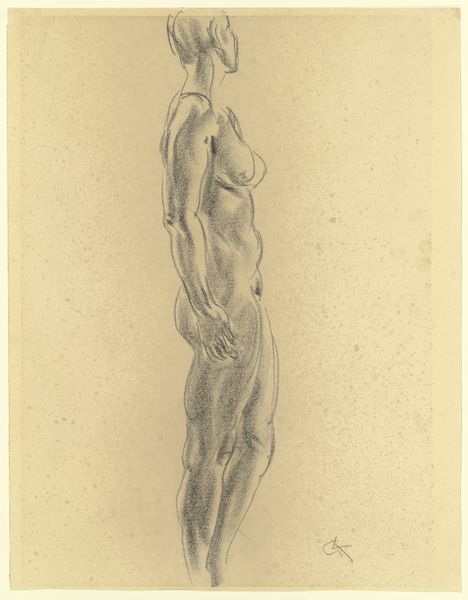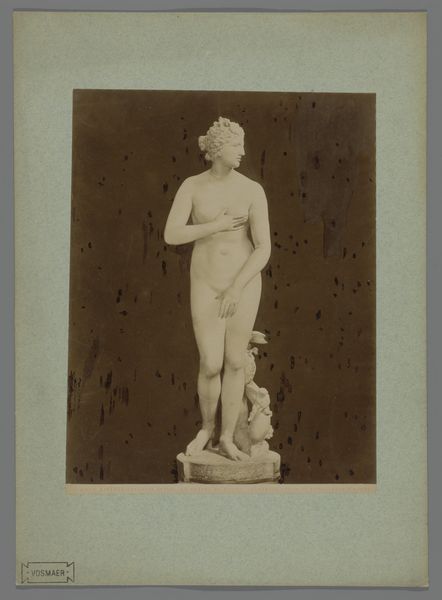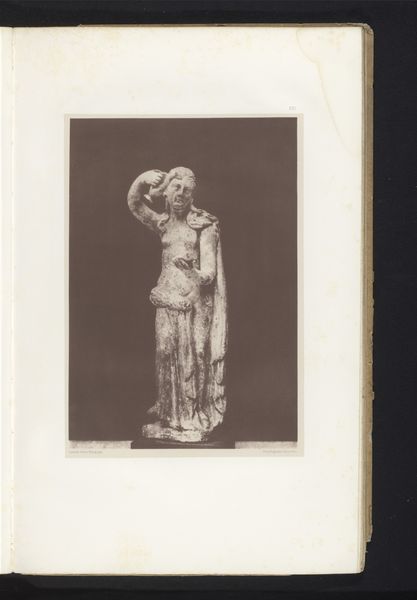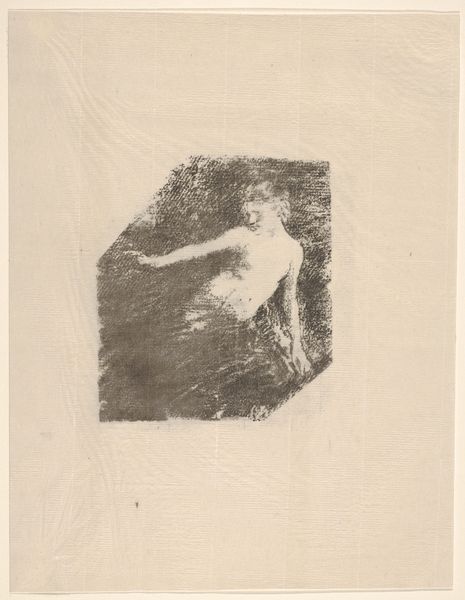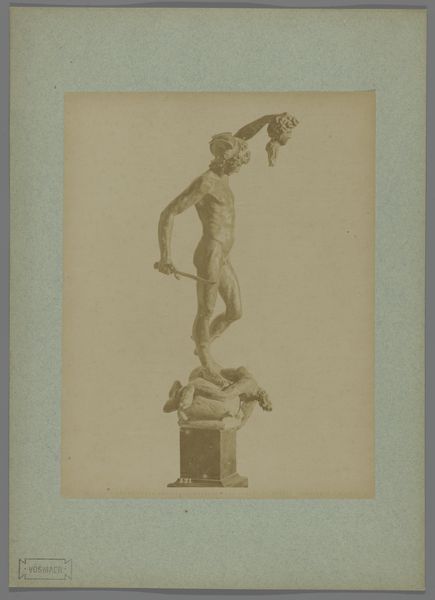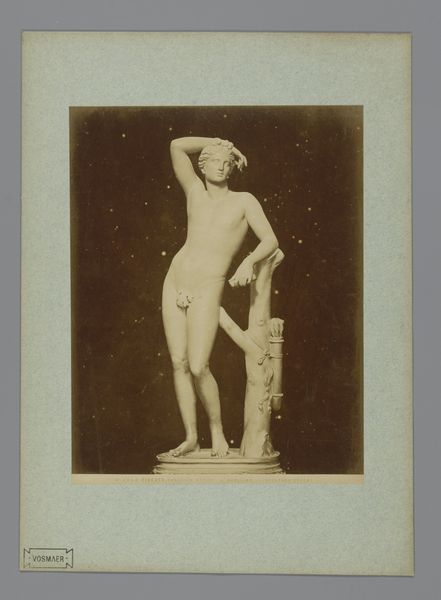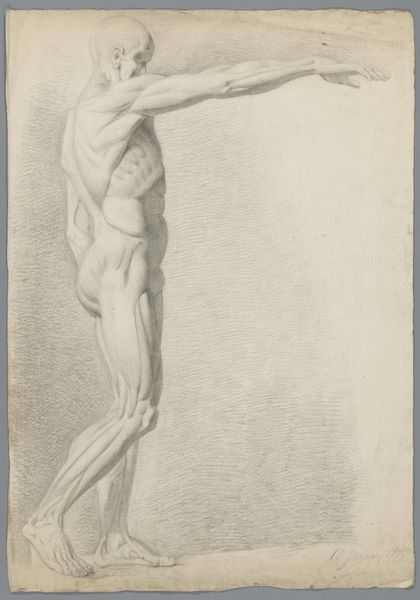
drawing, print, paper, woodcut
#
portrait
#
drawing
# print
#
figuration
#
paper
#
expressionism
#
woodcut
#
nude
Dimensions: height 431 mm, width 168 mm, height 797 mm, width 550 mm
Copyright: Rijks Museum: Open Domain
Editor: Here we have Samuel Jessurun de Mesquita’s "Vrouwelijk naakt staand," or "Female Nude Standing," a woodcut from 1914. The sharp lines and contrasting shadows give it a very striking and somewhat unsettling mood, especially with the figure gazing upwards with such an odd expression. What can you tell me about it? Curator: Well, this image created by Mesquita demands we consider the role of the female nude within the early 20th century through a radical intersectional lens. Looking at the social context around 1914, can we think about the traditional art historical idealization of the female body as a means of control? What stories are absent here, considering issues around power, class and representation? Editor: That's interesting, I never really considered it in terms of power dynamics. It's hard to get away from the traditional art history angle, even today. Curator: Exactly, because these "traditional" representations shape and influence how we understand the female form even now, dictating everything from acceptable body types to expected poses. Notice how Mesquita, while presenting a nude, disrupts that ideal with his Expressionist style. Her stance isn't coy or inviting. Editor: Yes, she appears much more autonomous. It does look almost confrontational now that you mention it. It feels as though the artist almost tried to depict her inner state with the harsh lines? Curator: And by doing so, he invites a more complicated discussion about the realities of the female experience at a pivotal time of the woman’s right of equal opportunities. How does her upward gaze make you feel given those inequalities? Editor: I suppose, if you view the shadow looming at her side as a manifestation of those difficulties, she could be envisioned as seeking some form of betterment? Curator: Precisely. So we might ask: in what ways does art like this enable both a resistance and a critique of power dynamics at the time? It offers valuable perspectives to ponder when approaching related subject matters within artworks. Editor: I now have many ways to interpret this piece; viewing this type of subject from all those diverse contexts has completely shifted my understanding! Curator: It has for me, too. By understanding this intersection of politics, theory and culture, we’re better able to connect with artwork like Mesquita’s.
Comments
No comments
Be the first to comment and join the conversation on the ultimate creative platform.
